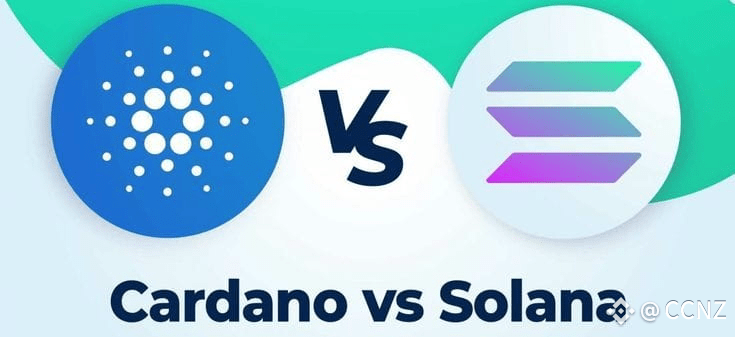
Cardano focuses on secure, deliberate development using EUTXO ledger design.
Solana delivers rapid transaction speeds with developer-friendly programming tools.
Governance models differ, impacting funding access and long-term project stability.
The competition for blockchain developers is intensifying among top Layer-1 platforms. Cardano [ADA] and Solana [SOL] offer sharply different visions for building decentralized applications. Cardano focuses on security, decentralization, and methodical development. Solana prioritizes high speed, ease of use, and rapid deployment. Developers’ choice depends on project needs, tools, and long-term goals.
Different blueprints: EUTXO vs. Account-Based Models
Cardano uses the Extended Unspent Transaction Output (EUTXO) model, expanding on Bitcoin’s design. Transactions consume and create UTXOs, each carrying smart contract logic.
Advantages: Predictable transaction outcomes and costs, plus the ability to process multiple independent transactions in parallel.
Challenges: Contention issues arise when different actions target the same UTXO, requiring careful design.
Solana follows an account-based model, similar to Ethereum, where balances and states are stored in a single ledger. Smart contracts, called “programs,” modify shared account data.
Advantages: High throughput via Sealevel parallelization and a familiar experience for developers.
Challenges: Transaction effects are less predictable due to live account changes, and past network outages have raised stability concerns.
Developer tools and onboarding
Cardano’s early reliance on Plutus, built on Haskell, created a steep learning curve. Newer options such as Aiken, simplify smart contract writing. Toolkits like Mesh SDK and Lucid enable JavaScript or TypeScript development. The Cardano Foundation’s “Tool Compass” guides newcomers to relevant resources.
Solana development primarily uses Rust, supported by the Anchor framework, to streamline complexity. Cross-language tools include Seahorse for Python and Solang for Solidity, attracting Ethereum developers. Solana Playground provides an online coding environment for instant experimentation. The network reports over 2,500 active monthly developers, driven by its beginner-friendly approach.
Speed, scaling plans, and governance
Solana confirms transactions in under a second with minimal fees, supporting high-frequency DeFi and NFT activity. Current throughput is in the thousands of transactions per second. The upcoming Firedancer validator client, developed by Jump Crypto, has tested at over one million TPS, aiming to boost speed and stability.
By design, Cardano’s base layer processes fewer transactions. Scaling will rely on the Hydra Layer-2 protocol, which in testing exceeded one million TPS, and the Ouroboros Leios upgrade with Input Endorsers to enhance base-layer throughput.
Governance also differs. Cardano runs Project Catalyst, where ADA holders vote on treasury funding. The upcoming Voltaire phase will introduce a constitution and elected representatives. Solana follows a validator-driven model where network nodes approve proposals from Solana Labs and partners. The Solana Foundation funds growth through large grants and hackathons, including a recent event with over 8,300 participants and 1,000 project submissions.
Regulation presents challenges for both. Cardano has aligned with Europe’s MiCA framework, while U.S. regulatory uncertainty persists as the SEC has suggested ADA and SOL may be securities. This legal cloud could influence enterprise adoption.
Disclaimer: This article is for informational purposes only and does not constitute financial advice. CoinCryptoNewz is not responsible for any losses incurred. Readers should do their own research before making financial decisions.
<p>The post Cardano or Solana? The Battle for Blockchain Developer Dominance first appeared on Coin Crypto Newz.</p>


